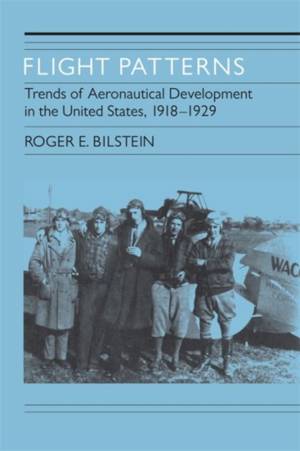
Door een staking bij bpost kan je online bestelling op dit moment iets langer onderweg zijn dan voorzien. Dringend iets nodig? Onze winkels ontvangen jou met open armen!
- Afhalen na 1 uur in een winkel met voorraad
- Gratis thuislevering in België vanaf € 30
- Ruim aanbod met 7 miljoen producten
Door een staking bij bpost kan je online bestelling op dit moment iets langer onderweg zijn dan voorzien. Dringend iets nodig? Onze winkels ontvangen jou met open armen!
- Afhalen na 1 uur in een winkel met voorraad
- Gratis thuislevering in België vanaf € 30
- Ruim aanbod met 7 miljoen producten
Zoeken
Flight Patterns
Trends of Aeronautical Development in the United States, 1918-1929
Roger E Bilstein
Paperback | Engels
€ 47,45
+ 94 punten
Omschrijving
From 1918 to 1929 American aviation progressed through the pioneering era, establishing the pattern of its impact on national security, commerce and industry, communication, travel, geography, and international relations. In America, as well as on a global basis, society experienced a dramatic transformation from a two-dimensional world to a three-dimensional one. By 1929 aviation was poised at the threshold of a new epoch.
Covering both military and civil aviation trends, Roger Bilstein's study highlights these developments, explaining how the pattern of aviation activities in the 1920s is reflected through succeeding decades. At the same time, the author discusses the social, economic, and political ramifications of this robust new technology. Aviation histories usually pay little attention to aeronautical images as an aspect of popular culture. Thoughtful observers of the 1920s such as Stuart Chase and Heywood Broun considered aircraft to be an encouraging example of the new technology-workmanlike, efficient, and graceful, perhaps representing a new spirit of international good will. Flight Patterns is particularly useful for its discussion of both economic and cultural factors, treating them as integrated elements of the evolving air age.Specificaties
Betrokkenen
- Auteur(s):
- Uitgeverij:
Inhoud
- Aantal bladzijden:
- 260
- Taal:
- Engels
Eigenschappen
- Productcode (EAN):
- 9780820332147
- Verschijningsdatum:
- 1/12/2008
- Uitvoering:
- Paperback
- Formaat:
- Trade paperback (VS)
- Afmetingen:
- 152 mm x 229 mm
- Gewicht:
- 390 g

Alleen bij Standaard Boekhandel
+ 94 punten op je klantenkaart van Standaard Boekhandel
Beoordelingen
We publiceren alleen reviews die voldoen aan de voorwaarden voor reviews. Bekijk onze voorwaarden voor reviews.











